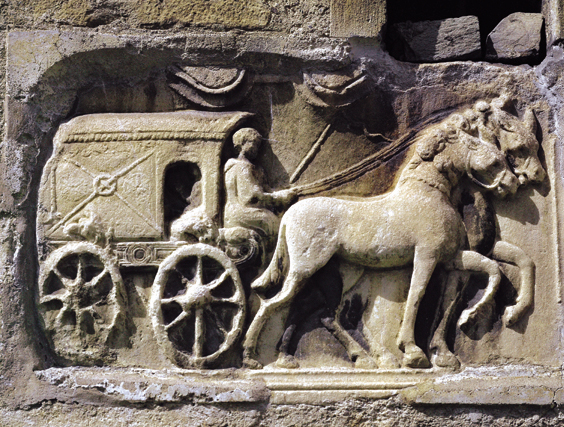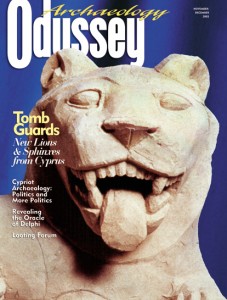Ancient Life: Letter Perfect
The Roman postal service

Neither snow, nor rain, nor heat, nor gloom of night kept Roman postal carriers from completing their rounds.
The going was made easy by the meticulously engineered roads that crisscrossed the vast Roman empire. Over this network, horse-drawn mail carts (such as the one depicted in this second-century A.D. relief from Austria) could travel 50 miles a day. Messages of the utmost urgency were carried by relay teams that covered 170 miles a day.
The emperor Augustus (27 B.C.–14 A.D.) established Rome’s first official postal service to communicate quickly and reliably with his far-flung governors and military officers. The so-called cursus publicus was strictly reserved for government officials; private letters were usually carried by servants or merchants. Augustus and his successors built about 47,000 miles of post roads, along with numerous relay stations to quarter animals and ease the transfer of cargo. These stations generally employed a stationmaster, an accountant, a veterinarian, grooms and mail carriers.
The cursus publicus was divided into two branches. The cursus velox (fast course), devoted to expediting communication throughout the empire, carried loads of no more than 1,500 pounds, usually drawn by horses. The cursus clabularis (open wagon course) used oxen to transport weightier loads.
Already a library member? Log in here.
Institution user? Log in with your IP address.

